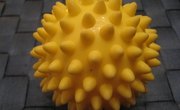
Rubber is the overall name given to polymers that can stretch and then return to their original shape after manipulation. The roots of rubber usage stretch back to the native people in Central America and the West Indies, but took root in Western societies as new processes were created to commercialize rubber. Today, rubber is used in many products that are essential to modern conveniences such as tires and pencil erasers.
Early Commercialization History
Natives from Central America and the West Indies are first known to have used rubber around 1600 BC to make balls and waterproof boots. In the middle of the 18th century and early 19th century, Europeans began using rubber to waterproof goods. Brazil and East Asia became the center of the rubber trade between the 1700s and 1900s, when large-scale plantations developed in response to consumer demand. In the early 19th century, the center of production shifted away from Brazil to East Asia due to cost differences.
Rubber Tree Growing Process
Tree seedlings are placed in pots until firmly established. The saplings are transplanted to a plantation, where they grow for about 6 years. Rubber trees are tapped by removing slivers of bark, which allows the latex to flow out of the tree into receptacles attached to the tree. The tapping is performed every other day on alternating sections of each tree. The latex is then taken for treatment and is eventually transformed into usable goods.
Types
Rubber is divided into natural rubber and synthetic rubber groupings. Natural rubber is made from the sap of some types of plants and trees. Synthetic rubber is made from chemical compounds and typically uses oil as a base agent.
Historical Names
Rubber is known historically by different names. In Mayan cultures, rubber was referred to as kik and means blood. In ancient Mexico, rubber was referred to as olli. Ecuadorian Indians referred to rubber as hevea. In Central America and Mexico, Indians called rubber castilloa. West Africans used funtumia elastica and Brazilians used manihot glaziovii to refer to rubber.
Important Individuals
Charles Marie de la Condamine wrote the first scientific paper on rubber, which he presented in 1751 and published in 1755. Charles Goodyear invented the process of vulcanizing rubber, which transforms rubber into a substance that can be used for shoes and ultimately tires. Wallace Hume Carothers and Arnold Collins helped develop the first synthetic rubber derivative, neoprene.
Uses
Natural and synthetic rubbers are used extensively in consumer products and for industrial purposes. Common products include tires, pencil erasers, inflatable objects, building foundation components and gaskets.
